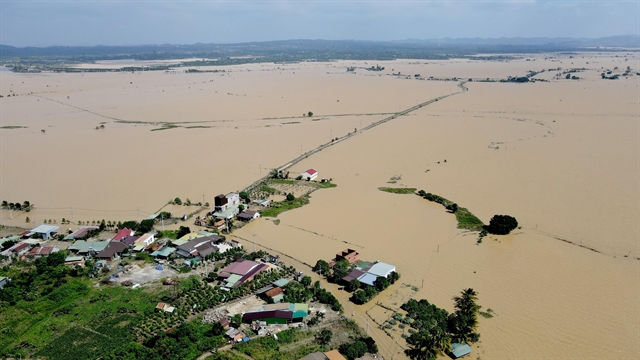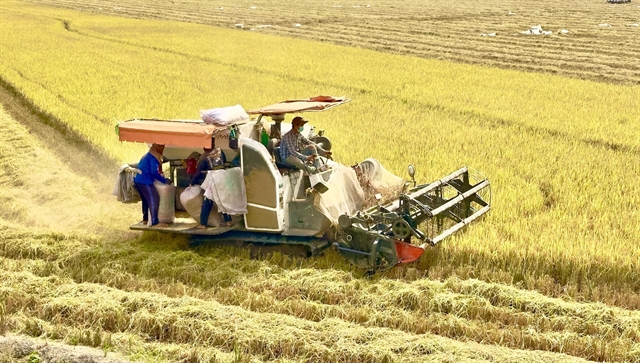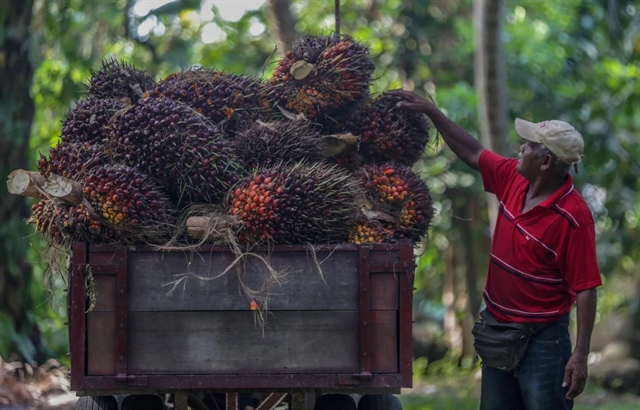 Society
Society

 |
| Many mango growing areas in An Giang Province’s Chợ Mới District have been granted production codes for export. – VNA/VNS Photo Thanh Sang |
AN GIANG – The conversion of rice fields with low yields into areas for growing vegetables, other crops, and fruit trees in An Giang Province has boosted farmers' earnings and resulted in better production efficiency.
After nearly five years of implementing the crop restructuring plan, the Cửu Long (Mekong) Delta province has successfully transformed over 23,000ha of low-yielding paddies.
This meets 67.6 per cent of the plan's 2021-25 target, according to the provincial Department of Agriculture and Environment.
Several localities have surpassed their objectives in switching from rice to vegetables, other crops and fruit trees, including Long Xuyên City and the districts of Phú Tân, Châu Thành, Thoại Sơn, and An Phú.
An Giang is the delta's second-largest rice producer after neighbouring Kiên Giang Province, cultivating more than 600,000ha of rice annually, harvesting four million tonnes, and playing a vital role in national food security and supporting exports of the grain.
While many localities in the province benefit from favourable conditions for rice cultivation, some face difficulties such as limited irrigation infrastructure and uneven terrain.
To address these challenges, the provincial People's Committee issued a decision in 2021, approving the crop restructuring plan.
Trần Thanh Hiệp, deputy director of the provincial Department of Agriculture and Environment, observed that profits from vegetables and other crops and fruits are three to five times higher than from the unproductive rice fields.
This has helped enhance farmers' incomes and generated more employment for rural workers, he said.
"The conversion of low-efficiency rice fields has helped several localities establish concentrated farming areas which meet the demands of enterprises looking for stable sources of raw materials for exports."
The province has developed numerous specialised fruit-growing areas, particularly for key mango varieties such as Ba Màu, Cát Hòa Lộc, and Keo.
The number of farming areas granted production codes and the scale of these areas has increased each year, meeting the province's export requirements.
The province has granted 619 production codes for farmlands covering more than 21,780ha. Of these, 515, primarily for fruits for export, encompass nearly 15,650ha.
These areas, which cultivate fruits such as mangoes, bananas, longan, durian, jackfruit, and grapefruit, export to many markets, including China, South Korea, the US, New Zealand, Australia, the EU, and Japan.
According to the province People's Committee, despite the positive outcomes of crop restructuring, the transformation to other crops is largely decided by farmers rather than planned by authorities.
The scale of the conversion is small, and some localities have yet to meet their target.
Irrigation systems remain inadequate and underdeveloped and there are also limitations and challenges to coordination and the marketing of fruit and vegetables.
 |
| Farmers in An Giang Province’s Châu Thành District harvest the 2025 winter-spring rice. – VNA/VNS Photo Thanh Sang |
Ngô Công Thức, deputy chairman of the provincial People's Committee, said: "To effectively implement the crop restructuring plan for the 2026-30 period, the agricultural sector must prioritise investments for building and upgrading irrigation systems and in-field transport infrastructure to effectively support the restructuring process.
"At the same time greater efforts are needed to promote the use of technology in production, select crops suited to local conditions and align production with enterprise demand and the province's sustainable development goals."
He called on relevant departments and agencies to speed up the issuance of production codes, attract businesses into value chain partnerships and provide farmers with training in scientific farming, VietGAP and export requirements.
The province plans to attract investment in processing facilities, develop trade services and rezone areas for growing high-value, traceable crops aligned with market demand.
The People's Committee has also called on businesses to coordinate with authorities to organise production, establish specialised farming zones and implement practices that meet VietGAP and market-driven product standards.
Co-operatives and co-operative groups are encouraged to adopt scientific and technological innovations, embrace digital transformation and adopt high-tech farming methods.
They are also advised to develop organic farming and circular agriculture models that recycle agricultural waste to reduce environmental pollution and enhance the added value of their products. – VNS




